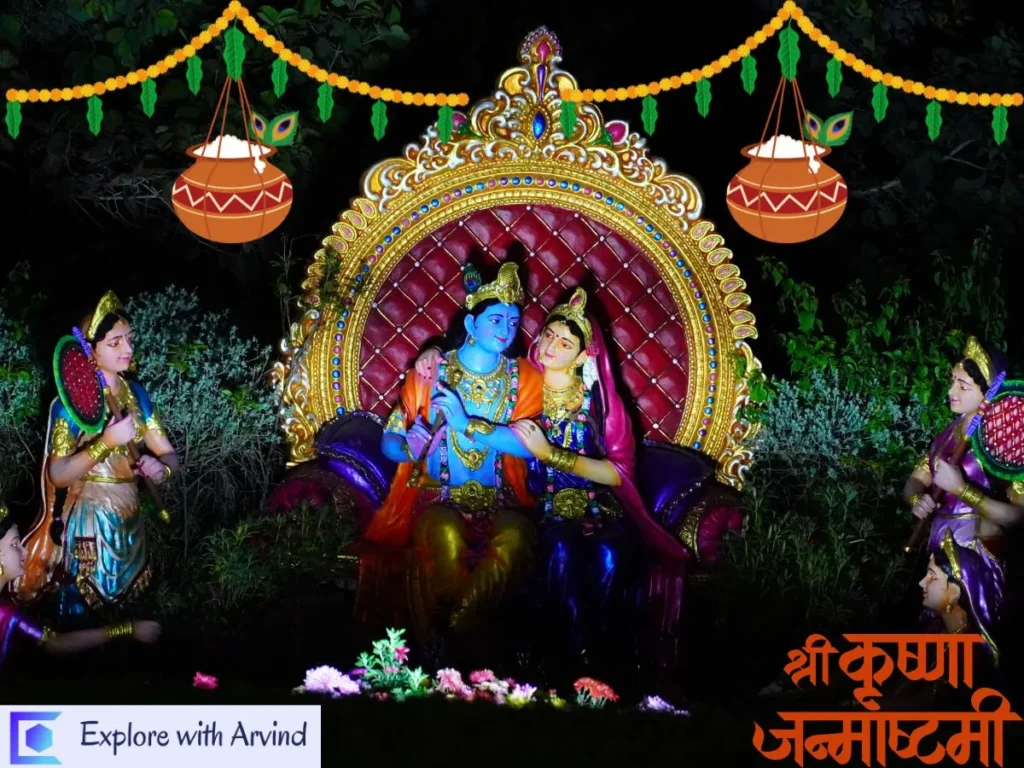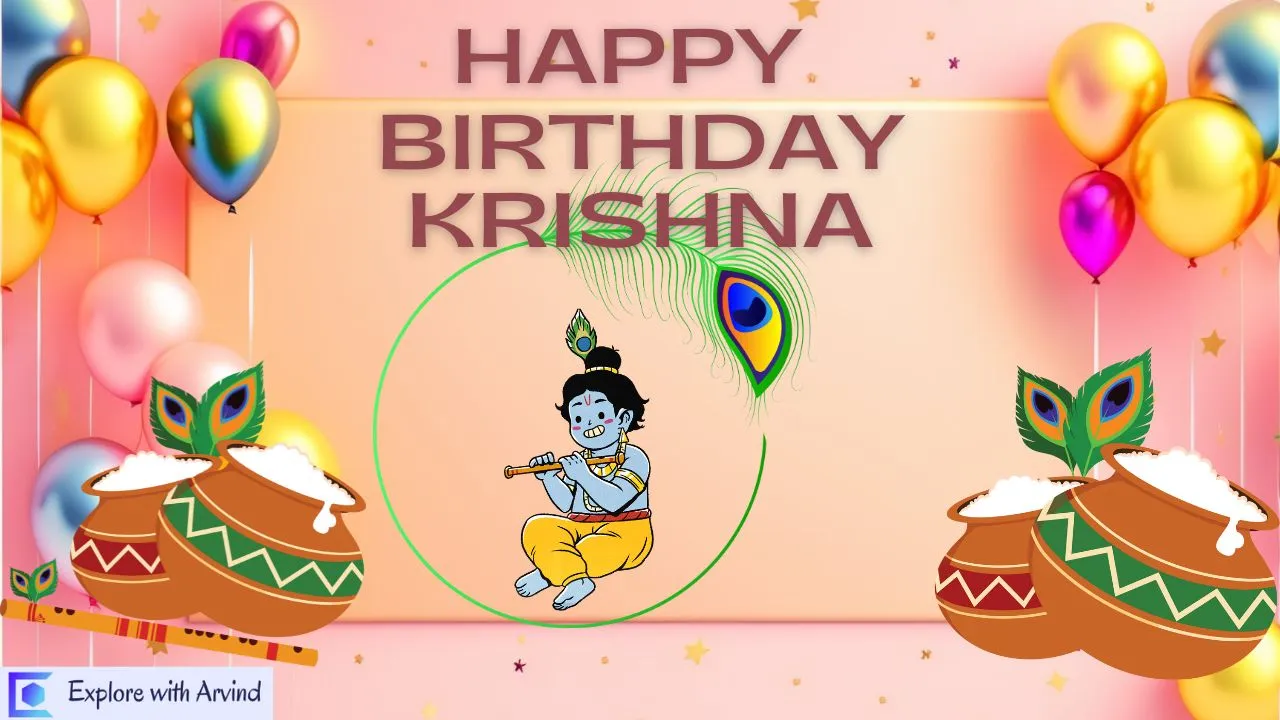Shree Krishna Janmashtami 2024: A Celebration of Divine Birth
Table of Contents
ToggleThe Divine Celebration of Shree Krishna Janmashtami: Traditions, Significance, and Festivities
Shree Krishna Janmashtami, one of the most significant Hindu festivals, is celebrated with immense fervor and devotion across India and various parts of the world. This auspicious day marks the birth of Lord Krishna, the eighth incarnation of Lord Vishnu, who is revered as a symbol of love, wisdom, and righteousness. The festival, also known as Gokulashtami, falls on the eighth day (Ashtami) of the Krishna Paksha (dark fortnight) in the Hindu month of Shravana, which usually corresponds to August or September in the Gregorian calendar.
The Legend of Lord Krishna’s Birth
According to Hindu mythology, Lord Krishna was born over 5,000 years ago in the city of Mathura, in the prison cell of his wicked uncle, King Kansa. The prophecy that Kansa would be killed by the eighth son of his sister Devaki filled him with fear and rage. As a result, he imprisoned Devaki and her husband Vasudeva, mercilessly killing each of their seven children.
However, when Krishna was born, the prison gates miraculously opened, and Vasudeva was able to carry his divine son across the Yamuna River to the safety of Gokul, where he was raised by Nanda and Yashoda. Krishna’s life was filled with miracles, and he eventually fulfilled the prophecy by slaying Kansa, restoring peace and dharma.
Significance of Shree Krishna Janmashtami
Shree Krishna Janmashtami holds immense religious and cultural significance. The festival is not only a commemoration of Krishna’s birth but also a celebration of his divine playfulness and his teachings that are documented in the Bhagavad Gita. Lord Krishna is considered the embodiment of love, compassion, and joy. His life and teachings continue to inspire millions, making Janmashtami a day of spiritual rejuvenation for his devotees.
The festival symbolizes the victory of good over evil, as Lord Krishna’s birth marked the end of the tyrannical rule of Kansa. It is also a time for devotees to reflect on the lessons from Krishna’s life, particularly the importance of righteousness (dharma) and devotion (bhakti).

Rituals and Traditions of Janmashtami
The celebrations of Shree Krishna Janmashtami vary across regions, but they all share a common essence of devotion and festivity. The rituals associated with the festival are deeply symbolic and are performed with great enthusiasm.
Fasting and Prayers
Devotees observe a day-long fast, which is broken at midnight, the believed time of Krishna’s birth. The fast, known as Nirjal Vrat, is observed with utmost devotion, and many refrain from consuming even water during the day. Throughout the day, devotees engage in singing bhajans (devotional songs), reciting Krishna’s exploits from the Bhagavata Purana, and chanting mantras.
Jhankis and Krishna Leela
In temples and homes, elaborate Jhankis (dioramas) depicting scenes from Krishna’s life are created. These include his birth in the prison, his playful childhood, and his heroic feats. In many regions, particularly in North India, Krishna Leela (enactments of Krishna’s life) is performed, with children and adults dressing up as Krishna, Radha, and other characters from the mythology.
Dahi Handi
One of the most popular traditions of Janmashtami, particularly in Maharashtra, is the Dahi Handi ceremony. This event is inspired by the playful nature of young Krishna, who was fond of stealing butter from the houses of Gokul. During Dahi Handi, a clay pot filled with yogurt, butter, and other goodies is hung high above the ground. Teams of young men form human pyramids to break the pot, symbolizing Krishna’s childhood pranks. The event is accompanied by loud cheers, music, and a festive atmosphere.
Midnight Celebrations
As the clock strikes midnight, the moment believed to be the time of Krishna’s birth, the atmosphere in temples and homes becomes charged with excitement and devotion. The idol of baby Krishna is placed in a cradle and worshipped with offerings of flowers, sweets, and fruits. The conch shells (shankh) are blown, and the air is filled with the sound of bhajans and the chanting of “Hare Krishna, Hare Krishna, Krishna Krishna, Hare Hare.”
Feasting and Sweets
Once the fast is broken, devotees partake in a grand feast. The offerings made to Krishna, known as prasad, are distributed among the devotees. Traditional sweets such as Makhan Mishri (butter and sugar), Panjeri, Kheer (rice pudding), and Laddus are prepared and enjoyed by everyone. The feast is a communal affair, symbolizing the shared joy and devotion of the community.
Celebrations Across India
The celebration of Janmashtami is a pan-Indian affair, with each region adding its unique flavor to the festivities.
Mathura and Vrindavan
Mathura, the birthplace of Krishna, and Vrindavan, where he spent his childhood, are the epicenters of Janmashtami celebrations. The temples in these cities are decorated with lights and flowers, and thousands of devotees throng the streets. The Banke Bihari Temple in Vrindavan and the Krishna Janmabhoomi Temple in Mathura are particularly famous for their grand celebrations, including elaborate processions and performances of Krishna Leela.
Maharashtra
In Maharashtra, the Dahi Handi ceremony is the highlight of the Janmashtami celebrations. The cities of Mumbai, Pune, and Thane witness large-scale events where participants, known as Govindas, compete to break the Dahi Handi. The event has become so popular that it attracts sponsorships and huge crowds, making it a significant cultural event in the state.
Gujarat
In Gujarat, Janmashtami is celebrated with the traditional folk dance known as Garba and Dandiya Raas. The temples are beautifully decorated, and the atmosphere is filled with devotional music and dance. The city of Dwarka, home to the Dwarkadhish Temple, holds special significance as it is believed to be the kingdom of Lord Krishna.
South India
In the southern states of Andhra Pradesh, Tamil Nadu, and Karnataka, the festival is known as Sri Krishna Jayanti. Devotees draw small footprints outside their homes, symbolizing the arrival of Krishna. Special dishes like Chakli and Murukku are prepared, and the Bhagavad Gita is recited in temples and homes.
Conclusion
Shree Krishna Janmashtami is more than just a festival; it is a spiritual journey that connects devotees to the divine presence of Lord Krishna. The rituals, traditions, and celebrations are expressions of love, faith, and devotion. As we celebrate this sacred day, let us reflect on the timeless teachings of Krishna and strive to imbibe his principles of love, righteousness, and compassion in our lives.


